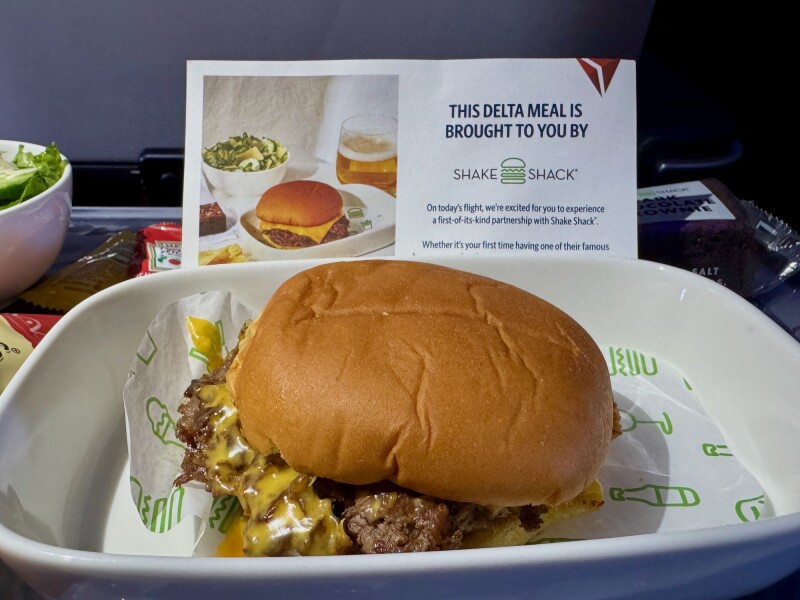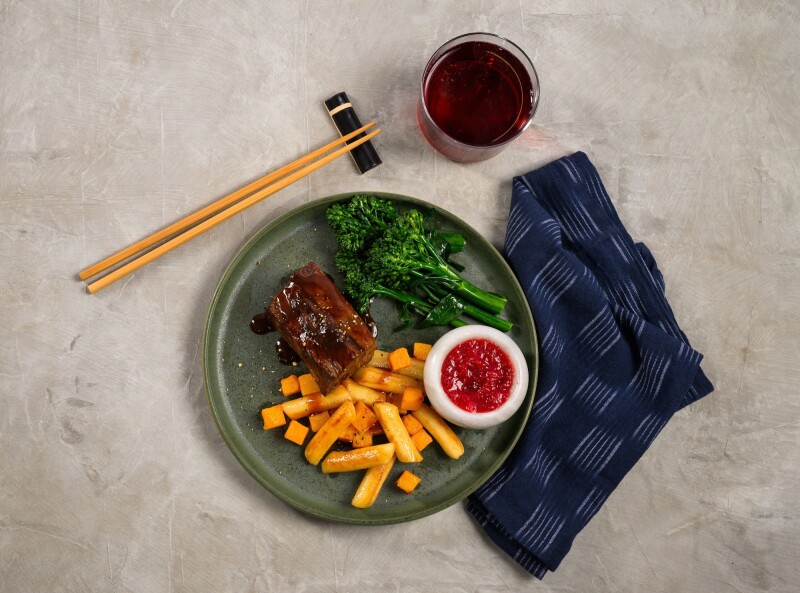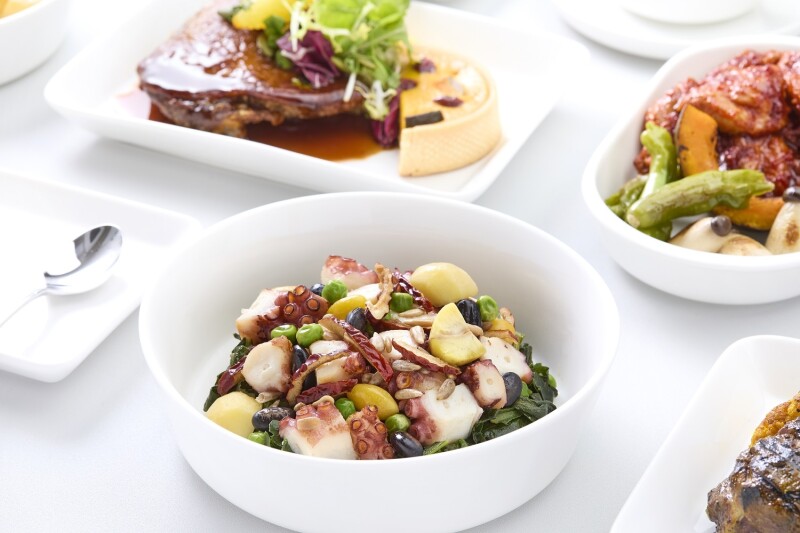For decades, the ritual of ridiculing airplane food has united travelers far and wide. The criticism got even worse during the COVID years, when airlines slashed budgets and served shelf-stable, prepackaged snacks and meals—if they served anything at all.
However, investment in in-flight food and drink has not only returned, it’s becoming a key differentiator to elevate an airline’s cachet. Take Delta Air Lines, for example. Late last year, the carrier announced a partnership with Shake Shack, rolling out the chain’s burgers to first-class passengers who preorder them for their in-flight meal at 35,000 feet. The collaboration expanded to several more cities in March, including on flights departing from flagship markets Los Angeles and New York.
“A lot of people ask me, isn’t a burger fast food? What’s it doing in domestic first class?” said Ash Dhokte, vice president of onboard service operations for Delta. However, Dhokte argues that Shake Shack is “premium” and aligns as a brand partner.

Delta passengers can preorder a Shake Shack burger to be served on flights from several cities, including Boston, Atlanta, Seattle, L.A., and New York (LGA).
Photo by Chris Dong
While the issue of whether Shake Shack is gourmet enough to be served in first class is up for debate, one thing is for certain. Passengers are gobbling them up, and a beef patty on a toasted potato bun has become Delta’s number one preordered item when it’s available.
Creating new menu items and restaurant collaborations is both an art and a science. As a plane climbs in altitude, air pressure drops while humidity within the cabin plummets. (At 30,000 feet, the relative humidity can be drier than many deserts.)
Both of these factors dull the sensitivity of taste buds, particularly with sweet and salty foods, by around 30 percent, according to a 2010 study commissioned by German airline Lufthansa. The result is that airlines need to ensure meals have extra flavor: more salt, spices, and sugar than a restaurant on the ground would ever use.
Then, there’s the artistic component. For chef Brandon Jew, owner of San Francisco’s Michelin-starred Mister Jiu’s, creating a seasonal menu for Alaska Airlines—a process that took about six months—meant subverting how most airlines source and prepare their food.
Alaska allowed Jew to bring in purveyors that he works with at Mister Jiu’s, including Stemple Creek, a progressive ranch committed to environmental stewardship. That was the easy part.

Alaska Airlines partnered with chef Brandon Jew, owner of San Francisco’s Michelin-starred Mister Jiu’s, to create a spring menu, including this braised short rib. It took about six months.
Courtesy of Alaska Airlines
“The challenge is: What would be best served that is fully cooked and then reheated?” Jew says. Jew’s team spent weeks recipe testing, sampling, and experimenting with the goal of “providing a comforting meal that would bring you back home.” First-class passengers on transcontinental Alaska flights can now order dishes like a tea-smoked soy chicken and a short rib braised in traditional Japanese shio koji marinade.
Across the Pacific in Seoul, Korean Air overhauled its entire food and beverage menu in March, in all cabins. And it was a big deal—the carrier hadn’t changed its in-flight offerings in 15 years. The revamp was part of a sweeping transformation to modernize the carrier, and ultimately, to stay competitive. “I ate so many meals that I thought I was going to throw up,” said Kenneth Chang, chief marketing officer of Korean Air, referring to the intensive undertaking of tasting nearly every potential new menu item.
The airline tapped chef Seakyeong Kim, owner of Cesta in Seoul, to create the menus. In both economy and premium cabins, new interpretations of Korean bibimbap with brisket, octopus, or truffles. Even Western meals get an update, which aligns with changing tastes. Business and first-class passengers can expect duck confit, surf and turf with veal tenderloin and crab, or steamed black cod.

One of chef Kim’s new dishes is “nutritious octopus rice,” served in the first- and business-class cabins. Other dishes include brisket bibimbap, tofu pad thai, and spicy eggplant stir-fry and rosé pasta.
Photo by Chris Dong
Back stateside, both Delta and Shake Shack spent nearly two years together developing their in-flight burger. That might seem like an excessive time for a single dish, but the process required a perfect “orchestra” to execute at scale. Delta served 44 million meals globally last year.
Dhokte and his team had to procure specialized equipment, like bun-toasting and buttering machines, for each airport kitchen. Then, a network of suppliers needed to mimic Shake Shack’s ingredients and deliver a comparable taste profile. (Patties are cooked on the ground before being flash frozen and then reheated onboard.) Think of it as an exercise in reverse engineering.
With every new menu item, like a new burger or chicken entrée, an airline’s roster of flight attendants must learn how to serve the final product. In-flight tests help fine-tune the process. On three flights, passengers had the option of the Shake Shack burger before its official launch, so the crew had real-life experience on the service flow. “Do I need to pack things differently? Do I need to place the bun three degrees to the side so it doesn’t get stuck and squished? It’s improving upon small elements like this,” says Dhokte.
One item that’s noticeably missing from Delta’s Shake Shack menu? French fries. Creating the perfectly crispy fry in the air is particularly difficult because of the reheating process. But it might happen one day. “I don’t think we’ll stop where we are. There will be a time and place for them,” Dhokte teased.








